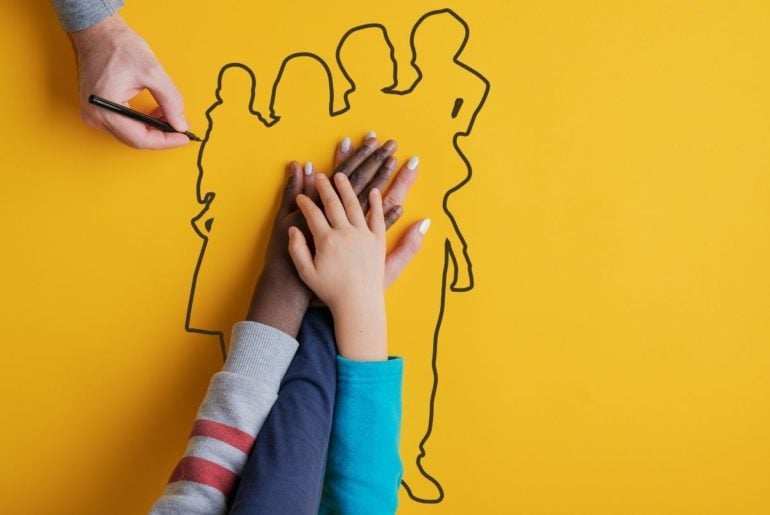When Dan and Jack Byrne enrolled in a 13-week adoption program 15 years ago, becoming foster parents was the farthest thing from their minds. “We were initially looking to adopt, but the more we learned about fostering during the classes, the more we became intrigued,” says Dan. He’s now a father of four children, ages 15, 14, 7, and 6, three of which were fostered until a new Florida law allowed the gay couple to adopt in 2015. The trainer assigned to teach their classes was honest with them about the pros and cons, however. “She was really clear that a lot of foster kids have already been through a lot by the time they get into foster care, so if you’re expecting a perfect, bouncing baby, it’s not for you,” Dan says.
With over 400,000 children in the foster care system according to the most recent federal data, it’s no wonder many good people consider becoming foster parents. But it’s also important to understand what you and your family should expect.
How do kids enter the foster care system?
When a state or local welfare agency deems a child’s home environment is unsafe, the child or children previously living in the home are placed in foster care, where foster parents step in and take on the responsibilities that would normally belong to the parents. Whenever possible, siblings are kept together, but not every foster parent is ready to take on more than one child.
What’s the difference between foster care and adoption?
Unlike adoptions, which are permanent, fostering a child is generally a temporary endeavor. The length of time a child lives with a foster parent varies and is determined by a judge and the social welfare agency assigned to their care. “You think it’s hard to imagine caring for a child, then giving them up when their forever home is ready, or when their parents or relatives are able to care for them again, but it’s also incredibly rewarding to be able to give them the love they need when no one else can,” Dan says. On average, children remain in state care for over a year and a half, with 5 percent remaining in foster care for five or more years. The average age of children entering foster care is 8.
It’s worth noting that unlike adoptions, foster parents don’t always receive all of the information related to the child’s background, in part to protect their privacy. So there may be underlying issues that you know nothing about, and it can be tough to navigate those situations sometimes. Foster parents don’t receive income for fostering a child but they usually receive a daily stipend to cover everyday expenses.
What are the rewards and requirements for fostering?
The foster care road is a winding one, but as the Byrnes and most foster parents will tell you, the journey can also be incredibly rewarding. First and foremost, fostering a child is a great responsibility that requires an unwavering level of commitment. It means welcoming a child into your home, something that not only affects you but everyone else in your family, too. It means committing 24/7 to the child’s overall well-being—essentially assuming the role of parent without actually being the parent. “If I had any advice, it would be to go in with the most open mind you can, because anything you learn in the training is that times five,” Dan says.
Foster parents can be single or married but there are other requirements that vary by state. In general, most state child welfare agencies require a criminal background check, a home inspection, and several hours of training. You’ll also likely have to show proof of steady income and in most cases, character references are requested. Some foster parents receive extra training in order to become what’s called treatment foster care parents. This refers to children with certain medical, emotional, or behavioral needs. Each city or town has its own agency that manages the foster care process.
“Being a foster parent is like getting married or having children of your own—it’s a major life event,” says Moira Szilagyi, M.D., Ph.D., FAAP, medical director of foster care pediatrics for Starlight Pediatrics in Rochester, New York. “You’re choosing to take on other people’s children in a way that touches your own family. It requires a huge level of commitment.”
Like the Byrnes, fostering a child is often the gateway to adoption. When that’s the case, the adoption is usually handled through the same local, regional, or state agencies and in some states, licensed private agencies, too.
If you’re thinking about becoming a foster parent, The Child Welfare Information Gateway is a federal organization with the resources to help, including a link to the appropriate agencies in your state.







